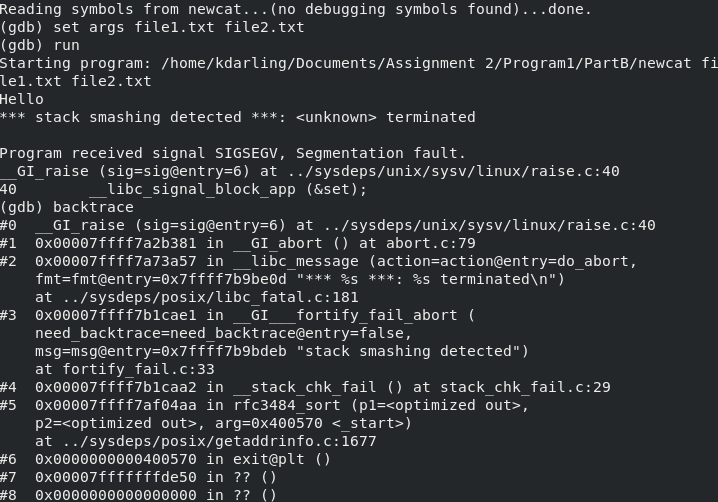

If the attacker can overwrite the function return address, which is at a fixed location in the overflow buffer, execution of the attacker-supplied code starts. Many stack-based buffer overflow exploits rely on the buffer being at a known location in memory. Not allowing an attacker to run executable code on the stack can prevent the exploitation of some vulnerabilities, but it is often only a minor inconvenience to an attacker. Nonexecutable stacks do not prevent arc injection or injection of the execution code in the heap or data segments. They do not prevent an attacker from using a buffer overflow to modify a return address, variable, data pointer, or function pointer. However, nonexecutable stacks do not prevent buffer overflows from occurring in the stack, heap, or data segments. Nonexecutable stacks are often represented as a panacea in securing against buffer overflow vulnerabilities. Many operating systems can be configured to use nonexecutable stacks. Nonexecutable stacks are a runtime solution to buffer overflows that are designed to prevent executable code from running in the stack segment.

The /RTCs option enables stack frame runtime error checking for writes outside the bounds of local variables such as arrays but does not detect overruns when accessing memory that results from compiler padding within a structure. Stack pointer corruption can be caused by a calling convention mismatch.
#STACK SMASHING DETECTED C++ VERIFICATION#
Stack pointer verification detects stack pointer corruption. Visual C++ also provides a runtime_checks pragma that disables or restores the /RTC settings. Microsoft Visual C++ provides native runtime checks to catch common runtime errors such as stack pointer corruption and overruns of local arrays at debug. Because attackers have numerous options for controlling execution after a buffer overflow has occurred, detection and recovery is not as effective as prevention and should not be depended on as the only mitigation strategy. Detection and recovery mitigations generally form a second line of defense in case the “outer perimeter” is compromised. Descriptionĭetection and recovery mitigation strategies generally make changes to the run-time environment to detect buffer overflows when they occur so that the application or operating system can recover from the error (or at least fail safely). Programming errors can result in buffer overflow vulnerabilities. Program runtime checks and protection techniques that can be used to detect stack corruption and buffer overruns or guard against attacks Technology ContextĪttacker executes arbitrary code on machine with permissions of compromised process or changes the behavior of the program.


 0 kommentar(er)
0 kommentar(er)
